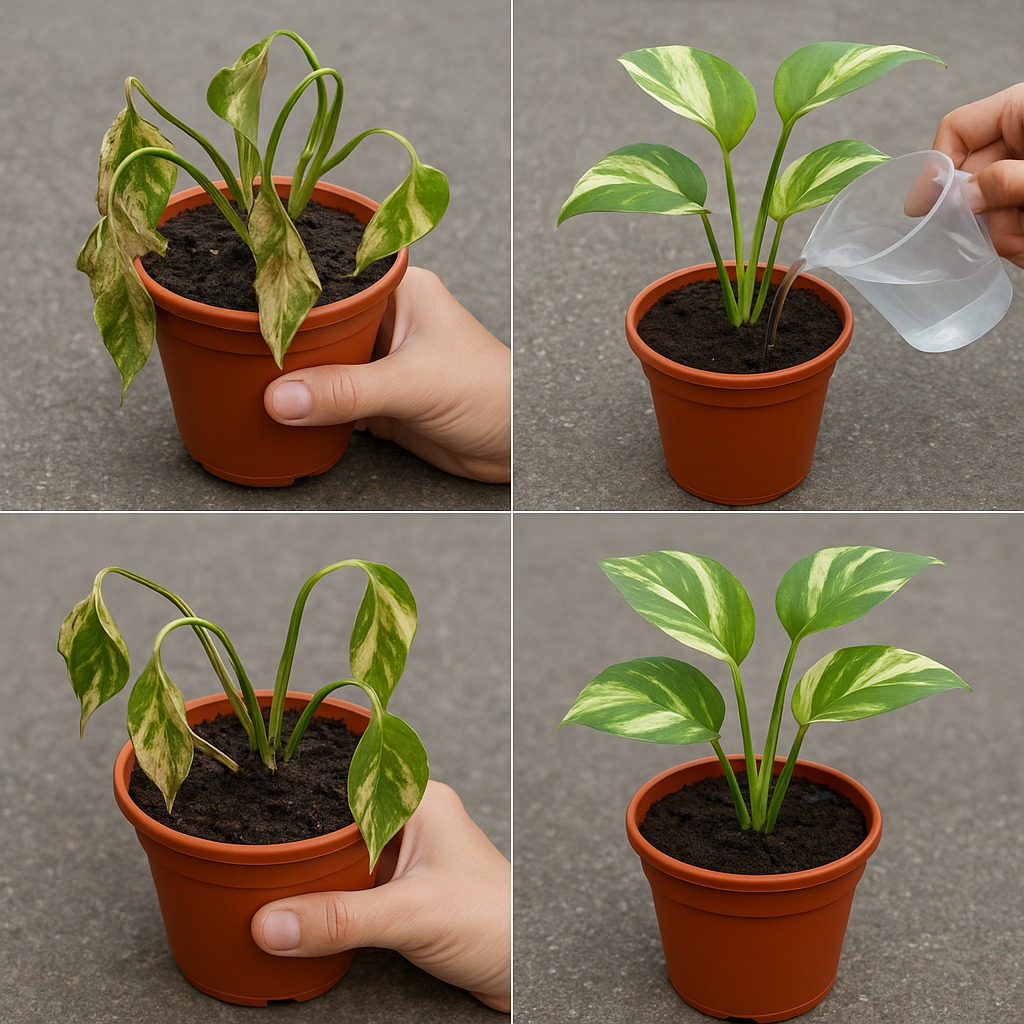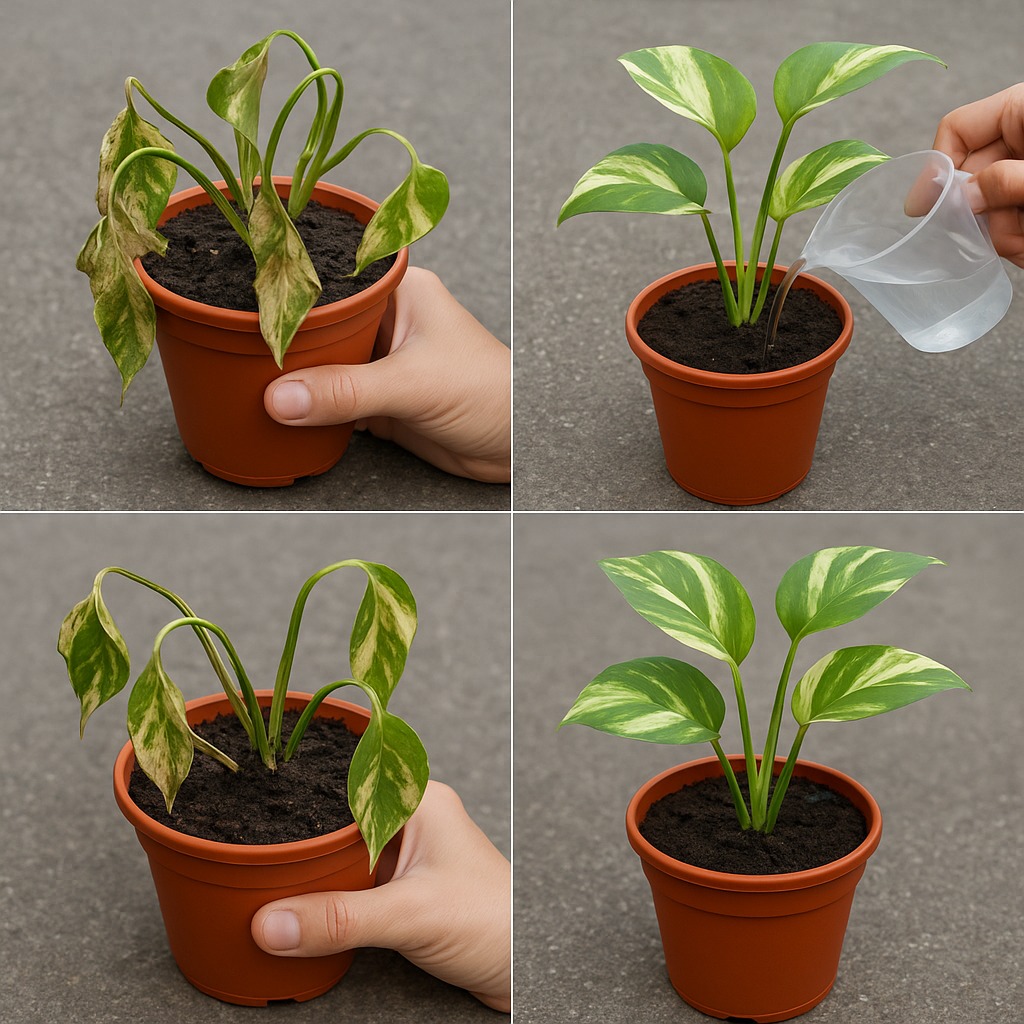
If you’ve ever stood over a dry, wilted plant wondering if it’s too late to save it, you’re not alone. The good news is that many plants that appear “dead” are not beyond hope. With some careful attention and the right techniques, you can often bring them back to life.
Here’s how to determine whether your plant is truly dead and how to revive it if it’s not.
Step 1: Look for Signs of Life
Before discarding your plant, inspect it closely.
Things to check:
- Green beneath the surface: Gently scratch a small section of the stem with your fingernail. If it’s green underneath, the plant is still alive.
- Stem flexibility: Bend a few stems. If they’re pliable rather than brittle, the plant retains moisture and life.
- Root health: Carefully remove the plant from its pot. Healthy roots are white or tan and firm. If they’re black, mushy, or smell foul, root rot may be present.
If any part of the plant is still alive, there’s a good chance it can recover.
Step 2: Identify the Problem
Understanding why your plant is struggling is key to helping it recover. Common causes include:
- Overwatering: Often leads to root rot. Look for yellowing leaves and soggy soil.
- Underwatering: Causes dry, brittle leaves and very dry soil.
- Insufficient light: May result in pale, leggy growth or leaf drop.
- Excessive light: Can scorch leaves, especially for shade-loving species.
- Pests: Check for signs like sticky residue, webbing, or tiny insects.
- Nutrient deficiencies: Yellowing or discolored leaves may indicate poor soil nutrition.
Step 3: Prune Dead Growth
Use clean, sharp scissors or pruning shears to remove all dead or decaying material. Cut away:
- Brown, black, or mushy roots
- Dried, shriveled leaves
- Brittle stems with no green inside
Removing the dead parts helps the plant focus its energy on regrowth.
Step 4: Repot if Needed
If the soil is compacted, moldy, or not draining well, repotting may be necessary.
To repot:
- Choose a container with proper drainage holes.
- Gently remove the plant and discard old soil.
- Trim away any unhealthy roots.
- Replant in fresh, well-draining potting mix.
- Water lightly to settle the roots.
Step 5: Adjust Conditions
Tailor the environment to the plant’s specific needs:
- Water appropriately: Don’t overcompensate. Water only when the top inch of soil is dry, unless the plant requires consistently moist soil.
- Improve lighting: Provide the right amount of light, whether it’s full sun, partial shade, or indirect light.
- Boost humidity: Some plants benefit from increased humidity. You can mist them occasionally or place them near a humidifier or on a humidity tray.
- Keep it warm: Avoid drafts and sudden temperature changes. Most houseplants prefer stable, warm conditions.
You can create a mini greenhouse effect by placing a clear plastic bag loosely over the plant (with ventilation holes) to retain humidity while it recovers.
Step 6: Be Patient
Recovery takes time. It might take weeks—or even months—for a plant to show signs of new life. Watch for:
- New shoots or leaves
- Green stems reappearing
- Improved root health
Avoid the temptation to fertilize too early. Wait until you see healthy new growth before adding nutrients.
When Revival Isn’t Possible
If the plant’s roots are completely rotted, and all stems are brown, dry, and brittle, it may be beyond saving. In that case:
- Compost what you can.
- Sanitize the pot and tools.
- Reflect on what might have gone wrong to prevent the same issue in the future.
Plants That Often Recover Well
Some plants are naturally resilient and respond well to revival efforts:
- Pothos
- Snake plant
- Spider plant
- Peace lily
- ZZ plant
- Philodendron
These are great options for those still building their confidence with plant care.
Final Thoughts
It may seem almost impossible to bring a plant back from the dead—but many times, with a little care and consistency, it can be done. By checking for signs of life, diagnosing the problem, and patiently restoring the right conditions, you can often watch a struggling plant come back to vibrant health.
Don’t give up on your plant too quickly. It might surprise you.
